A | B | C | D | E | F | G | H | I | J | K | L | M | N | O | P | Q | R | S | T | U | V | W | X | Y | Z
A
Address (or Public Key)
In crypto, an address refers to a string of alphanumeric characters that can also be represented as a scannable QR code. An address is used to send and receive funds via transactions on a blockchain network.
ADR
The acronym for American Depositary Receipt, an ADR is a negotiable security instrument issued by U.S. banks. An ADR represents a pre-specified number of shares in a foreign company that is traded in U.S. markets. ADRs enable American investors to own shares of foreign companies, which otherwise can be a really complicated and cumbersome process.
Airdrop
Airdrop is a digital asset distribution method that involves sending a cryptocurrency to wallet addresses. Airdrops are considered a good way to conduct marketing campaigns and promote awareness about a new coin or token. Airdrops typically require the recipients to perform simple tasks such as app downloads, referrals, or promoting the project on social media.
Altcoins
Any cryptocurrency other than Bitcoin is classified as an altcoin. Some of the most popular altcoins in the market today include Ethereum, Binance Coin, XRP, Solana, and Dogecoin, among others.
Altseason
Altseason (short for altcoin season) is a period during which money flows out of Bitcoin and into altcoins. This typically results in rapid and significant price increases in most major altcoins.
API
Application Programming Interface, or API, refers to a piece of code that enables two applications to interact and exchange information. APIs have many uses in blockchain and crypto. For example, crypto exchanges provide APIs that traders can use to fetch market data for trading bots. These bots use the data to trade automatically on behalf of traders.
Arbitrage
Arbitrage trading is a trading method wherein the trader attempts to exploit tiny differences in the price of an asset in two or more markets. The arbitrage trader purchases the asset in one market and sells it in another almost instantaneously to profit from the difference in the two prices.
Asset
An asset is an economic resource that can be owned or controlled for profit and/or future benefits. In the context of trading, the term asset refers to a financial instrument that can be traded in markets. For example stocks, cryptocurrencies, bonds, and commodities are some of the most popular assets in global financial markets.
All-time high (ATH)
ATH of cryptocurrency refers to its highest ever price in a quote currency such as the U.S. dollar, euro, ether, or bitcoin.
Anti-money laundering (AML)
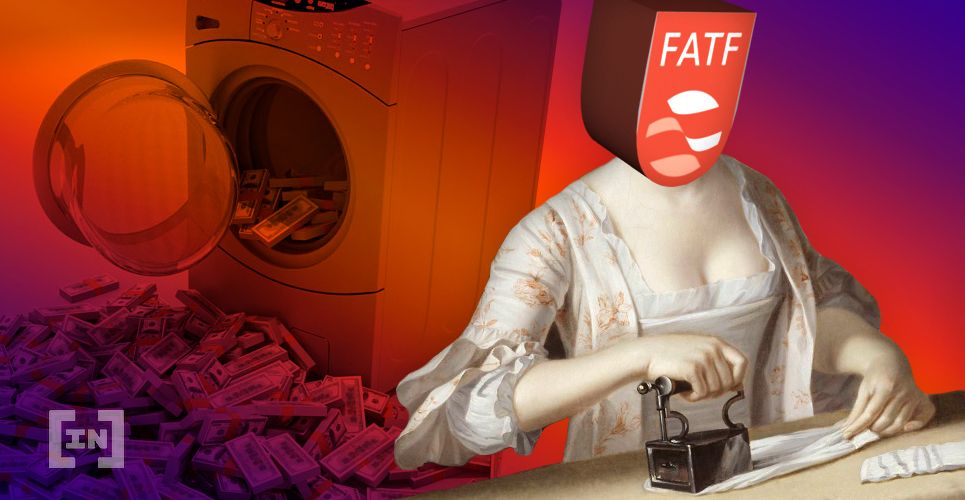
AML is a legal and regulatory framework that focuses on minimizing and eliminating the flow of capital generated through illegal or dubious activities.
At the Money (ATM)
It is a term used to describe an options contract with a strike price that is identical to the underlying market price. At the Money options see a lot of trading activities because they are so close to becoming profitable.
Ashdrake
Ashdrake is a known trader and high-profile crypto skeptic who has been the butt of jokes in the crypto community for having lost a lot of money betting against Bitcoin in 2015.
Automated Market Maker (AMM)
An AMM is a type of decentralized exchange (DEX) where the liquidity is controlled by a smart contract rather than the conventional manual approach with order books.
B.
Bags
In crypto, the term “Bag” refers to the coins and tokens an investor is holding in their portfolio. The term is more apt to refer to a significant amount of a particular asset.
Bagholder
Refers to a person who bought and holds cryptocurrencies, expecting the price to rise in the future in order to make a profit.
Barry Silvert
A well-known investor, bitcoin enthusiast, and founder of Digital Currency Group. He became popular when he won an auction for 48,000 bitcoin; conducted by the United States Government in 2014.
Basis point
It is a unit of measure used to quantify the change between two percentages. It can also be called “BP” for its acronym in English, which is pronounced as “beep.” One basis point is equal to one-hundredth of 1%, that is, 0.01%.
This means that a 0.01% change is a one basis point move, a 1% change is a 100 basis point move, and a 10% change is a 1,000 basis point move.
Batch trading
Batch trading refers to the act of accumulating multiple orders to execute them simultaneously. This is a proven method to reduce time and effort because it allows multiple buy and sell orders to be batched together as one large transaction.
Bear market

A bear market is a market that witnesses a downward trend. During a bear market, assets see significant price drops over a period. That makes it diametrically opposite to a bull market, which is a market with an upward trend.
Bearish
Being bearish in the world of trading means that you believe that the market or a financial instrument is going to experience a bearish trajectory. Being bearish is the opposite of being bullish, as the latter means that you think the market is going to go higher.
Bid price
Bid price refers to the price that a market maker is willing to pay to buy an asset.
Binance Smart Chain
Binance Smart Chain (now called BNB Chain) is a blockchain designed to run parallel to Binance’s premier blockchain, the Binance Chain. It enables DApp development at much faster speeds, with larger capacity, and at lower latency compared to Ethereum.
It is also compatible with NFT transactions (buying and selling of NFTs). While Ethereum is currently the most popular blockchain for NFT projects, the likes of Binance Smart Chain and Solana have their own fast-growing user bases.
Bitcoin
SponsoredBitcoin is the world’s first cryptocurrency and the largest one too (by market cap).
Blockchain
A blockchain is an immutable and digitally distributed, decentralized, public ledger that exists across a network. All cryptocurrencies are developed on top of a blockchain that records all transactions and stores them transparently and securely.
Blue chip values
These are the shares of companies that are reputable, financially stable, and well-established in their industry. Over time, the companies that are considered blue chip tend to change, so the definition of what it takes to achieve blue chip status is a bit vague.
However, a company that is considered a blue chip tends to be at or near the top of its industry, as well as having a presence in a recognized index and owning a well-known brand name
Bonds
Bonds are a form of financial investment that consists of lending money to an institution for a certain period of time. They can typically take two forms: corporate bonds and government bonds, depending on the type of organization to which the loan is made.
Brent Crude
Brent crude oil is the reference oil in the European market and one of the three main references for oil investors. The other references are WTI (West Texas Intermediate) and Dubai/Oman, although there are other smaller varieties that can also be invested in.
Broker
A broker is an individual or company that conducts trading on behalf of an investor. They can do this with different asset classes, such as stocks, forex, real estate, or insurance. A broker charges a commission for its services.
BTFD (Buy the F**n Dip)
BTFD is a crypto slang used to refer to the act of buying a coin or token while its price is falling. If you are doing a BTFD, it essentially means you are buying an asset with the belief that it is only undergoing a short-term blip and its price will bounce back in the foreseeable future to yield a net profit for you.
Bull run
An upward market trend during which assets see a constant price increase over a period.
Buy the Dip (BTD)

Indication to buy when there is a price drop (Similar to BTFD).
C
Call covered
A covered call is a call option trading strategy. It involves holding an existing long position in a tradable asset and writing (selling) a call option on the same asset, with the aim of increasing the overall profit.
Call option
It is a contract that gives an investor the right, but not the obligation, to buy a certain market at a certain price on a specific expiration date. The value of a call option increases if the market price of the asset increases.
Candlestick
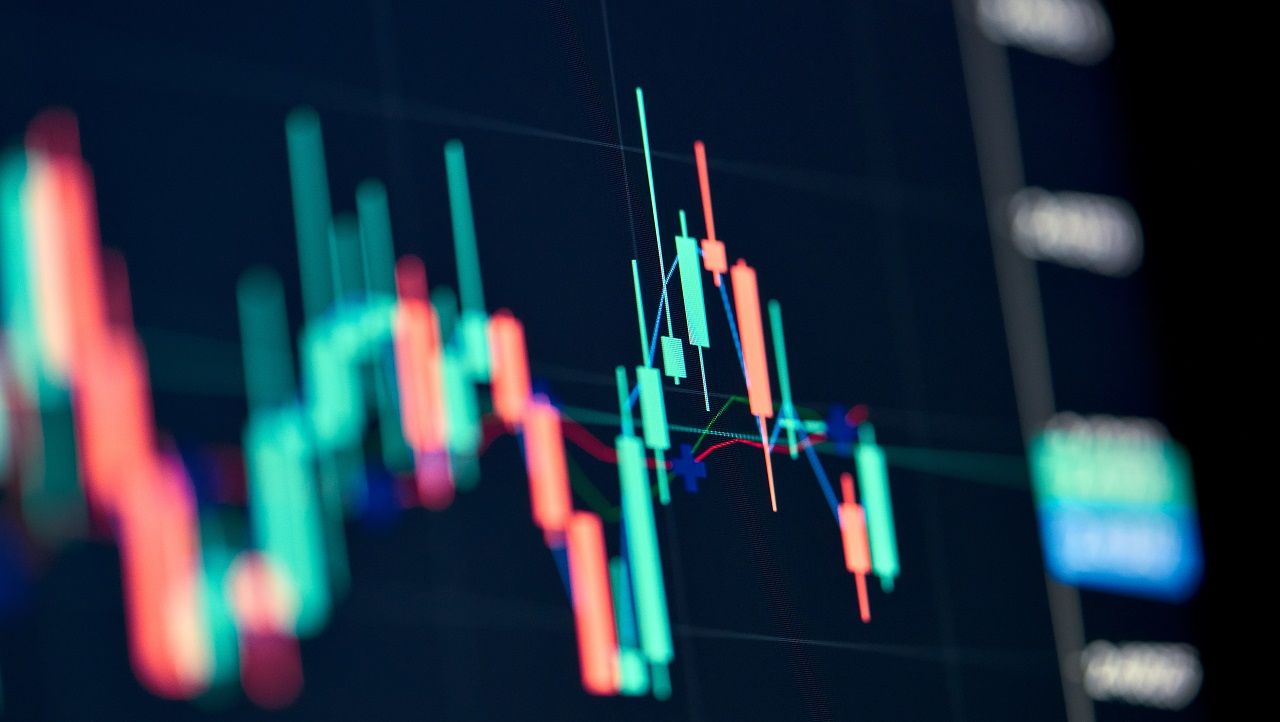
Candlesticks are used to represent price actions through a graph representation. A candlestick displays the open, close, high, and low points of an asset’s price within a certain period.
Capital
The term capital is best defined as the ownership of an asset without any debt involved.
CBDC
CBDC stands for Central Bank Digital Currency. It is the digital version of a country’s government-issued fiat and is managed by a central bank.
CFD trading:
CFD is a type of financial derivative and is the shortened form of Contract for Difference. A CFD is a contract between two parties who agree to exchange the difference in the price of an asset from the moment the contract is opened until the moment it is closed. It is an inherently risky financial instrument.
CFDs allow investors to trade market volatility across various types of assets without having to own the underlying asset. CFD investors try to profit from asset movements, regardless of whether they go up or down, as CFDs can be bought (long position) and sold (short position).
CFD investors use leverage to get more exposure to the markets, which allows them to make more profits, but also more losses.
Chartist
A chartist is an investor who relies, above all, on the analysis of charts to understand the historical oscillations of the prices of a financial instrument, with the aim of obtaining more reliable predictions and speculating on its behavior in the future. These types of investors are also known as technical analysts or technical investors.
Circulating supply
The circulating supply of a cryptocurrency stands for the total number of coins (or tokens) of that asset available and circulating in the market.
Coin

In crypto, the term “coin” refers to a digital asset that is independent of any other platform and has utility as an exchange of value. A coin typically has its own blockchain, whereas tokens do not.
Collateral
Borrowers on a DeFi platform need to deposit collateral to secure a loan. The collateral is usually digital assets that are locked until the borrower pays the loan back in full.
Commission
It is the price charged by an exchange or investment broker to carry out operations on behalf of an investor. The commission rates vary from broker to broker, as well as depending on the asset and the type of service on offer.
Order-only brokers typically charge lower commissions, as they do not make investment decisions on behalf of the client or advise the client. Note that the commission may not be the only type of expense an investor has to incur while using a brokerage service.
CPI
It stands for Consumer Price Index, an average of various consumer goods and services that is used as an indicator of inflation. The movements of the CPI are usually expressed in percentages, where the positive movements refer to inflation and the negative ones to deflation.
A very significant part of the powers of central banks such as the Federal Reserve or the European Central Bank is related to keeping inflation within established benchmarks. They try to achieve this through monetary policy adjustments, such as changing the base interest rate.
Cost of holding position
The cost of holding position, also known as the cost of carry, is the amount of additional money that you might have to pay to hold a position. This may be in the form of overnight financing charges, interest payments on margin accounts and Forex transactions, or storage costs for any commodity supplied via a futures contract.
D
DAO

DAO stands for Decentralized Autonomous Organization. As the name suggests, DAOs are not dependent on individuals, and they operate autonomously via rules encoded into a smart contract.
dApp
dApps, or decentralized applications, are software applications that can run autonomously without depending on a centralized entity. Similar to DAOs, DApps carry out operations via the rules encoded into a smart contract.
Dark pools
Dark pools are networks, usually private markets or forums, in which institutional investors buy or sell large volumes of shares without the details of the operation being made public to the rest of the market.
These types of pools are also known as liquidity black boxes. They are a system for large investors to carry out operations among themselves without causing price movements in the market that could eventually harm them along with the rest of the market.
If an investor wishes to sell a substantial portion of a company’s shares in a public market, they are required to declare their intentions and risk the value of the shares being significantly reduced due to increased supply.
The dark pools eliminate this risk since the operations are made public when they have already taken place and, in addition, access to these markets is restricted.
Deadcat (or Dead cat)
Deadcat means a temporary, short-term recovery of an asset following a prolonged decline in its price. The recovery is only temporary, and the downtrend is expected to resume shortly afterward.
Decentralized Exchange (DEX)
A DEX is a trading platform for buying and selling digital assets. Unlike centralized exchanges (such as Binance, Coinbase, and the likes), DEXs run independently without requiring any central authority.
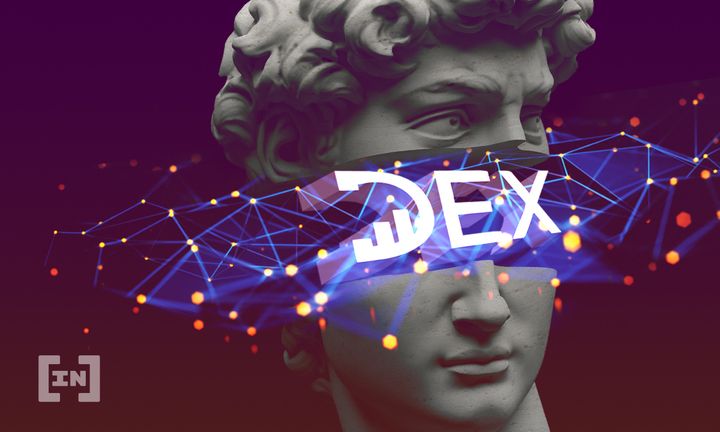
Depreciation
Currency depreciation is the decrease in the value of a currency relative to another. It specifically refers to currencies on a flexible exchange rate: a system in which the forex market fixes the value of a currency based on supply and demand.
The opposite of currency depreciation is currency appreciation, where a currency becomes stronger. Forex investors can take advantage of both appreciation and depreciation, going long or short depending on their market predictions.
Dividend
A dividend is the part of the profits that a company decides to distribute among its shareholders. It is usually expressed as a percentage. When a company makes a profit, it can be reinvested in the company itself or distributed, part or all, among the shareholders through dividends.
It is one of the ways that shareholders can earn income from their investments. If a company does not offer a dividend, investors will expect this to be offset by a further increase in the value of its shares. Dividends usually consist of a punctual or periodic payment, but they can also be distributed in equity or in shares.
DMA
In trading, DMA stands for Direct Market Access. It is a way of trading stocks that offers more flexibility and transparency compared to traditional trading.
It is a suitable method for advanced investors. With DMA, investors trade directly on the stock market’s order books. DMA investors can view orders directly on the books of the market they are trading and are charged for the service through commissions rather than the spread.
Dox
It is the action of revealing private information of a token or an individual and exposing it publicly to the crypto community. Generally, it is done maliciously by a hacker.
However, nowadays the term “doxing” is also used when a team behind a project sheds the veil of anonymity and reveals their identity to inspire trust.
Dynamic stop
It is a specific type of stop-loss that automatically follows your position if the market goes up, locking in your profits, but stays put if the market goes down, and closes your position if the market moves against you.
DYOR (Do Your Own Research)
DYOR is a piece of advice financial experts always recommend before you go on investing in a crypto asset (rather than taking all the hype and shilling around it at face value).
E
EBITDA
It is a method of evaluating a company’s performance without taking into account the tax environment and other financial factors. EBITDA stands for Earnings Before Interest, Taxes, Depreciation, and Amortization.
ECB
When investors talk about the ECB, they are referring to the European Central Bank, the central bank of the 19 European Union countries which have adopted the euro.
Economic calendar
An economic calendar is a very useful tool in the world of financial operations. As the term implies, it is a program with dates and times of all the important economic events that could affect the financial markets in the short and medium term. Unlike the news, which we also have to keep track of, calendars are used to organize our strategies in pursuit of future events that could affect one or more currency pairs. Some of them also include past events and indicate how they affected the financial instrument in question.
Historically, these events tend to affect an asset’s behavior in the markets. Therefore, they are an ideal tool to complement your strategy and adapt it to external factors. There are some very professional and complete ones that are used by the big brokers on Wall Street. One of them is the Bloomberg Terminal calendar, which we would have access to with a huge investment. However, there are others equally useful for smaller investors or retailers.
EDSP
It stands for Exchange Delivery Settlement Price (market delivery settlement price) and refers to the price at which derivative contracts are closed in the financial markets. Stock markets use the EDSP to calculate the amount each party owes at the time an options or futures contract is entered into.
ERC-20

The ERC-20 token standard enables developers to create their own unique token on the Ethereum blockchain.
ERC-721
ERC-721 is a token standard that enables the creation of unique, non-fungible tokens.
ESTR (Euro-Short Term Rate)
It is a reference interest rate that reflects the overnight borrowing costs of banks within the eurozone.
The European Central Bank (ECB) calculates and publishes this interest rate. The ESTR replaces the previous euro overnight index average (EONIA) and the Euro Area Interbank Offered Rate (EURIBOR) to become the benchmark for the European Union (EU) and the European Free Trade Association (EFTA).
This is because the EURIBOR and EONIA failed to meet the requirements set by the new benchmark European regulations, which specify that all interbank rates must be based on data rather than estimates and surveys.
ETF
An ETF can be defined as a basket of securities that you can purchase or sell via a brokerage firm or an exchange. ETFs can be offered on an array of asset classes including commodities, cryptocurrencies, and pretty much all commonly traded asset classes.
Ethereum
Ethereum is a blockchain with smart contract functionality. The native coin on the blockchain, Ether (ETH), is the second most popular cryptocurrency in the world by market cap. Ethereum has an array of use cases and is the go-to platform for the majority of DeFi, NFTs, DApps, and smart contract platforms.
ETP (Exchange Traded Product)
These are a series of financial instruments that trade during the day on national markets. Each ETP has a reference index that it replicates. Some ETPs may track well-known markets, such as the FTSE 100, but you can also find ETPs that track more niche or specialized benchmarks, such as certain sector-specific stock indices, which allow for high dividends.
F
FCA

The FCA, or Financial Conduct Authority, is the regulatory body for financial services in the U.K. It is the successor to the FSA or Financial Services Authority. It was created in Dec. 2012, although it did not come into operation until 2013.
The FCA is responsible for regulating the conduct of all entities, both retail and wholesale, in the financial services industry. This includes banks, financial consultants, and brokers. At the same time, it is an independent body from the U.K. government. It is funded through fees it collects from companies and members of the financial services industry.
Fiat currency
It is a national currency that is not linked to the price of a commodity, such as gold or silver. The value of a fiat currency is largely based on public trust in the issuer of the currency, which is usually the country’s central bank or government.
Fibonacci Retracements
They are technical analysis tools that identify possible areas of support and resistance through calculations and charts. Identifying these areas is useful for investors as it can help them decide when to open or close a position, or when to place stop and limit orders.
Fill out
Fill out stands for carrying out an order. When the order has been completed, it is said to have been “filled” or “executed.” However, it should be noted that there is no guarantee that all trades will be filled.
To fill an order, certain parameters must be met. There must be sufficient trading volume in the market (if there is no one willing to buy or sell, your trade will not take place). It is important to make sure that your trade has not expired and that the market is within trading hours, as only orders that are open and on markets within these hours can be filled.
Financial market
It is defined as a means through which assets are traded, allowing buyers and sellers to interact and facilitate exchanges.
However, the term can be used in different ways, as it can refer to physical places, virtual exchanges, or groups of people who are interested in transacting.
FOMC
The Federal Open Market Committee, FOMC, is the branch of the Federal Reserve Bank responsible for making short and long-term monetary policy decisions.
Forks
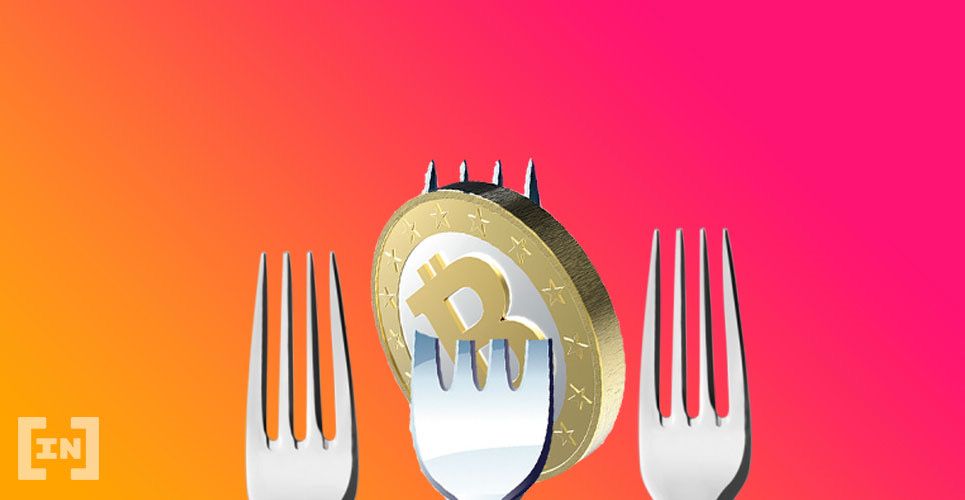
In programming terms, a fork can be defined as an open-source code modification. While a fork has traditionally been a convenient way to test processes, it is slightly different with blockchains. With blockchain, a fork is commonly used to enforce a fundamental change or create a new blockchain with similar (but not identical) traits as the original chain.
Forex
It is the abbreviation of the foreign exchange (exchange of currency) — it is the market in which one currency is converted into another. The Forex market is also called the foreign exchange market or FX. It is the largest and one of the most liquid financial markets in the world, trading trillions of dollars in foreign exchange every day.
FOMO
FOMO stands for Fear of Missing Out. It is an intense emotion many investors undergo when an asset or the market itself enters a rapid bull run, and they don’t want to miss out on it. FOMO often leads to bad decision-making because it is purely emotion-driven. Unchecked sentiment may encourage hasty and unwise purchases.
FUD
Acronym for “Fear, Uncertainty, and Doubt.”
Fundamental analysis
Fundamental analysis is a method used to assess the intrinsic value of an asset and to analyze the factors that could influence its price in the future. This type of analysis is based on the evaluation of assets based on external events and influences, as well as financial statements and industry trends.
Fungibility
Fungibility means replaceability. Fiat currencies are an example of a fungible asset because a dollar owed can be paid using any dollar bill in circulation. That is not the case with non-fungible assets such as a piece of art or an NFT because they are one-of-a-kind.
Futures contract:
A futures contract is a legal agreement between two parties to trade an asset at a pre-specified price on a specific date in the future. Futures contracts are traded on exchanges and can be used to gain exposure to a variety of assets, such as commodities, cryptocurrencies, or indices. They are commonly known as futures.
G
Gamma
It is a delta derivative: the relationship between the price of a derivative and the price of the underlying asset. Specifically, gamma is the movement of delta with respect to the price of the underlying asset. If an option has a high gamma, then its price movement relative to the price movement of its underlying asset is volatile.
This increases both risk and reward, as any price movement of the underlying asset will be amplified by the price movement of your option. Gamma is at its highest when a trade is done “at the money” and at its lowest when it is very “in the money” or “out of the money.”
Gas fees
It is the fee that blockchain users have to pay for the computational resources required to execute transactions. It is an incentive for those supporting and securing the network while ensuring that all transactions are genuine. Gas fees also discourage malicious players from spamming the network with high volumes of transactions.
GDP
It is the Gross Domestic Product of a country, that is, the total value of goods and services produced in a country during a specific period. It is used as an indicator of the size and health of a country’s economy.
The GDP of a country takes into account all private and public spending and revenue. It includes the expenses of the administration, the consumption of companies and individuals, investments and net exports (calculated as total exports minus total imports). GDP is usually calculated annually, but could be obtained for any other period.
Genesis block
It is the very first block of data computed in a blockchain network’s history.
Gwei
Gwei is a small denomination of Ether (ETH). It is commonly used to calculate gas prices.
H
Hedging operation:

It is done in order to reduce or eliminate the risk that derives from the fluctuation of the price of the underlying asset. As a general rule, a buying or “long” position in the cash asset is hedged with a selling or “short” position in the futures market.
Logically, the inverse situation (short position in the cash asset) is hedged with a buying or long position in the futures market.
Heikin Ashi
It is a type of chart pattern used in technical analysis. Heikin Ashi charts are similar to candlestick charts, but the main difference is that a Heikin Ashi chart uses daily price averages to show the average price movement of an asset.
HFT
High Frequency Trading or HFT is a type of advanced trading that processes a large number of trades very quickly using powerful computing technology. It can be used to spot the best price for a single large order or to spot profit opportunities in the market in real-time.
HODL
Crypto slang for the word “hold.” Its origin can be traced back to a forum discussion where a Bitcoin enthusiast misspelled the word “hold” as “hold.” Since then, it refers to the strategy of holding a particular cryptocurrency over the long haul and not selling it irrespective of market conditions and price movements. That is why the term signifies the act of enduring volatility without giving in to selling pressure.
Honey Badger
One of the nicknames given to Bitcoin. It comes from the name of a carnivorous mammal known for being “the most fearsome animal in the world.” It is a reference for those who believe that Bitcoin can, like the animal, defend itself very well and, no matter how severe the challenges are, continue its march.
I
ICO
Acronym for Initial Coin Offering, an ICO is a fundraising method wherein new projects sell their homegrown cryptocurrencies to investors. It is (kind of) the IPO-equivalent in the crypto market.
Immutability
Immutability refers to the inability to change or be changed. It is one of the key features of blockchain technology and its offshoots, including the likes of Bitcoin.
IPO
When a company makes an IPO (Initial Public Offering), it puts its shares up for sale publicly. Before an IPO, the company is defined as “private” because its shares are only available to early investors.
After an IPO, share ownership opens up to a broader market. This is why POV is also known as IPO or IPO.
In-the-money
It is a term that describes the state of monetization of an option, or of an underlying asset, when we compare it with the price at which it can be sold or bought (its strike price). Specifically, in the money refers to an option associated with an underlying market that has exceeded its strike price, giving it an intrinsic value greater than zero.
For call options (those that bet that the price of the underlying asset will rise), this means that the price of the asset has exceeded the strike price. For put options (those that bet that the price of the underlying asset will fall), it means that the price of the asset has fallen below the strike price.
If the price of an asset has not broken through the strike price, it is called an out-of-the-money option. An investor always wants his option to be in the money at the time he expires. If not, it will expire worthlessly. In the money means that the option has intrinsic value and can be exercised.
However, it will only return profits if the amount earned from the trade exceeds the initial premium paid. If an option is already in the money, the premium may be higher. An option’s premium may also be higher if there is a greater chance that the option may be in the money sooner rather than later, such as during times of high volatility or if the option’s expiration date is a long time away.
Inflation
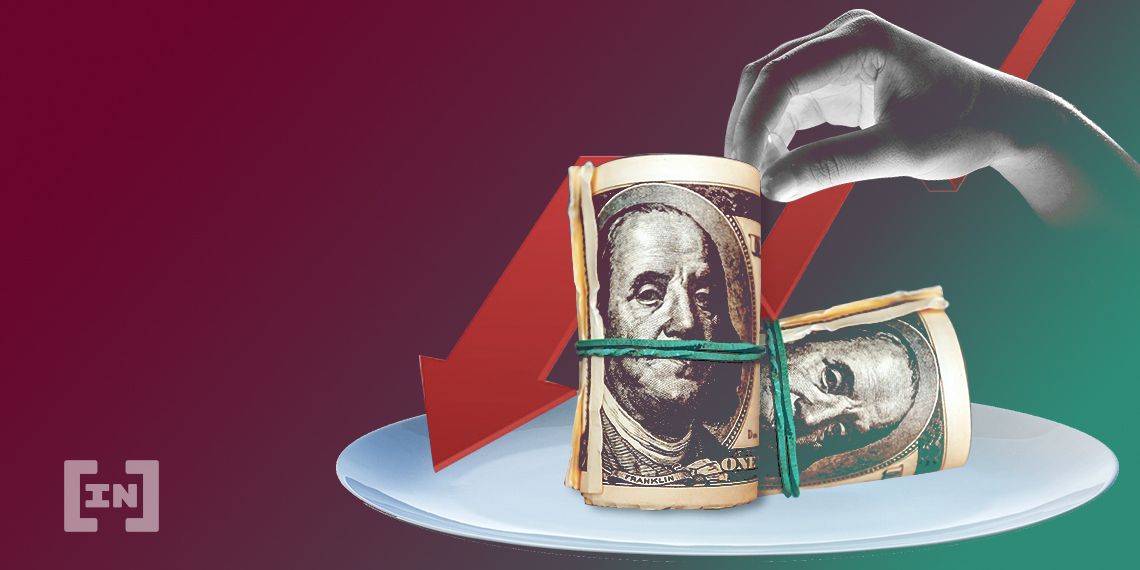
It is the increase in the cost of goods and services in an economy. Since that in turn means that each unit of an economy’s currency has lost value relative to those goods and services, it is also an indicator of currency devaluation. The opposite of inflation is called deflation.
It occurs when the cost of goods and services decreases and, therefore, the value of each unit of currency increases.
Interest
In economics, the term interest can have several definitions. In the first place, it can refer to the amount that is charged to the person requesting a loan. It can be a cost or a system for an investor to make a profit. Second, it can refer to the number of shares of a company held by a particular shareholder.
Interest rates
It is the amount that a lender charges the borrower for lending an asset and is usually expressed as a percentage of the amount borrowed. The percentage usually refers to the amount that is paid each year (it is what is called the annual rate), but it can be used for other more or less periodic payments.
Interest rates can be simple or compound. Simple interest is derived only from the original loan (referred to as principal) and compound interest is calculated from the principal plus interest accrued throughout the loan. Therefore, if a loan of 100 euros has 5% compound interest, after one year the interest will be 5% on 105 euros (the original 100 euros plus the 5 euros of accrued interest).
Intraday order
It is a type of order or instruction that an investor gives to his broker to buy or sell a certain asset. Intraday orders involve a trade being executed if an asset reaches a certain price (called a level) at any time on the day the order was placed.
The intraday order will be extinguished if the asset in question does not reach the price listed on it before the market closes. There are two different kinds of intraday orders: intraday stop orders and intraday limit orders.
If the price at which the trade is executed is more favorable than the current market price, an intraday limit order is placed, and if it is less favorable, an intraday stop order is placed. Intraday orders are different from GTC (Good Till Cancelled) orders or orders that specify a shorter or longer execution time.
Intrinsic value
It is a way of describing the perceived or true value of an asset. This is not always identical to the current market price because assets may be overvalued or undervalued. Intrinsic value is a common part of fundamental analysis, which investors use to evaluate stocks as well as to price options.
Investor
It is any person or entity that allocates capital to an investment with the aim of obtaining benefits. However, investors often have a different approach towards financial markets than traders.
Investment capital
Investment capital is the part of the financial resources that are available to operate in the market. It can consist of money or other assets.
IRR
The Internal Rate of Return is a capital budgeting measure used by companies to determine the profitability of a potential investment or project based on cash flow predictions. The IRR formula is complex and relies on a number of trial and error processes to obtain the correct one.
J
Jihan Wu
He is the co-founder of Bitmain, one of the world’s most recognized mining companies and manufacturers of Bitcoin mining computers. He became one of the proponents of Bitcoin Unlimited, a solution to Bitcoin’s scalability problem.
L
Leverage
Leverage is a concept that can help you multiply your exposure to a financial market without having to invest more investment capital.
Leverage ratio
It is a measure investors use to determine a company’s financial leverage. In this context, leverage is the sum of the funds that have been acquired through borrowing from creditors (or debt) compared to the funds acquired through equity.
Leveraged products
They are financial instruments that allow investors to gain greater exposure to the markets without having to increase investment capital. For this, leverage is used.
Liquidity ratio
It is a measure used to determine a company’s ability to sell its tangible assets in order to pay off its short-term debt. Businesses typically have a limited amount of time to pay off short-term debt, so this ratio is useful in establishing the liquidity of a business.
LIBOR
The London Interbank Offered Rate (LIBOR) was the benchmark interest rate used to calculate the average rate at which banks would offer each other a short-term loan.
LIBOR, or the LIBOR rate, is being phased out of the international monetary system and will be replaced by a number of different interest rates for different parts of the world.
Limit order
It is an instruction given for a trade to be executed at a level that is more favorable than the current market price. There are two varieties of limit orders: entry orders (which are to open a position) and close orders (which are to end an open position).
Limit orders allow you to specify the minimum price you want to sell at or the maximum price you want to buy at. If you want to open an order to buy or sell an asset at a price that is less favorable than the current market price, you can use a stop order.
Liquidity

It is used in finance to describe the ease with which an asset can be bought or sold in the market without affecting its price. When there is high demand for an asset, there is high liquidity, as it will be easier to find a buyer (or seller) for that asset.
Long position
It refers to the purchase of an asset with the intention that the price of the underlying will increase. It is also known as “going long” or “opening a long position,” and this is usually done by bulls with an optimistic view of the market.
M
M2
It is a classification of the money supply. It includes M1 (which is made up of cash outside the private banking system, along with checking account deposits), as well as principal in savings accounts, money market accounts, retail mutual funds, and time deposits of less than €100,000.
M2 is a broader concept than M1 because it includes assets that remain highly liquid but are not exclusively cash. M2 is primarily used as a classification of the money supply in the Eurozone and the U.S.
Margin
These are the funds needed to open and maintain a leveraged trading position. It is the difference between the total value of your position and the funds that have been loaned to you by a broker or leveraged trading provider. There are two types of margin to consider when investing: initial margin and maintenance margin.
Initial margin is the deposit required to open the position, often called deposit margin or simply deposit. Once you have opened your position, you may need to add more money if your trade starts to incur losses and your margin deposit is no longer able to keep the position open.
SponsoredIf this happens, your provider will ask you to deposit more funds into your account. This is known as a margin call.
Margin call
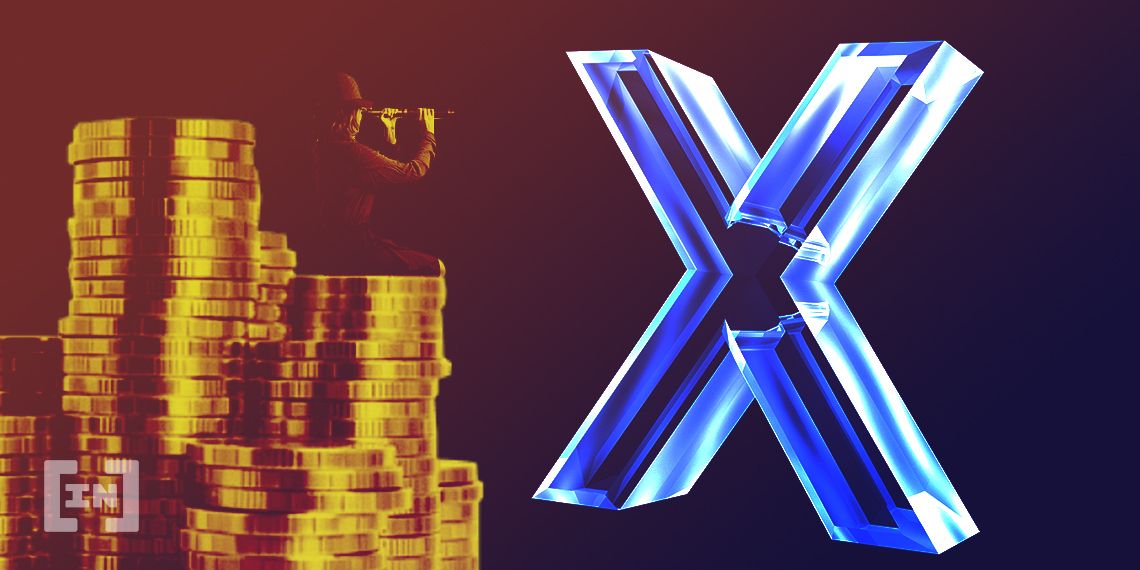
It is the term that describes the alert sent to an investor to notify him that the capital in his account is below the minimum necessary to maintain an open position. A margin call means that the investor must add additional funds to their account or close the position to reduce the required maintenance margin.
Market capitalization
Market capitalization (or market cap) of an asset such as Bitcoin is the total dollar value of that particular asset currently in circulation. It is calculated by multiplying the current coin price of the asset by its circulating supply.
Market capitalization can also represent the total value of a company’s shares on the market. It is a simple way to determine the size of a company and assess the risk of investing in its stock.
Market data
Market data is basically trading data in real time. It covers information such as the price, bid and ask quotes, and market volume of an asset. Reports on various assets and financial instruments are filed by trading centers and subsequently distributed to investors and companies. Market data exists for thousands of global markets, including stocks, indices, Forex, and commodities.
Market maker
A market maker is an individual or an entity that buys and sells large amounts of an asset to facilitate liquidity, which then in turn ensures the smooth functioning of the market.
Market order
It is an instruction from an investor to his broker to execute a trade immediately at the best available price. Market orders are usually executed very quickly, as long as there is enough liquidity in the market. When a market order has been executed, your order is said to have been filled.
Market mapping
It is a technique by which investors calculate the viability of an operation or investment. Market mapping can be used to analyze different levels of volatility and different prices of individual assets, or to analyze entire companies.
Maximalist (Bitcoin maximalist)
Someone who believes in the power of Bitcoin so much that they believe it is superior to all other altcoins.
MCAP
Short for ‘Market Capitalization’ (see above).
Met
Refers to Ethereum in a pejorative way.
Meta Trader
It is a widely used electronic trading platform among investors around the world. It is used to carry out transactions in Forex, in the main indices and in commodity markets.
Like most trading platforms, it allows investors to view charts, get real-time prices, and place orders with their broker.
MIFID
The Markets in Financial Instruments Directive (MiFID) was first implemented in Nov. 2007 to regulate the provision of investment services by financial institutions within the EU. Its main objective is to increase competition and consumer protection.
Moon
Continuous upward movement of the price of an asset.
MTF
Multilateral Trading Facilities or MTFs offer investors and mutual funds an alternative to traditional financial markets. They allow operating in a greater variety of markets than most financial markets, even with assets that do not have an official market.
MTFs often take the form of electronic systems. They are controlled by a licensed trader or sometimes an investment bank. As in a financial market, software is used to connect sellers and buyers as quickly as possible.
N
Net income
They are the total amount of profit (often referred to as earnings) that a company makes and that it publishes in its earnings report.
Noobs
It is a derivative of the word “newbie,“ which means rookie, and refers to someone newly introduced to a certain subject.
O
Offer
It is the term used to designate an investor’s intention to purchase an asset or a financial instrument from another investor or entity. The offer price is one of the prices that are usually given in the sale of financial assets. It represents the price at which an asset can be purchased and, therefore, is usually higher than the market price.
It is the opposite of the bid price and is often referred to as the ask price. The bid price (the price at which an asset can be sold) is lower than the market price, and the difference between the two is known as the spread. In order to obtain profitability, investors must take into account the spread: the operation will only be profitable when the price of the asset in question exceeds the ask price (in long operations) or the purchase price (in short operations).
Option
An option is a contract that gives its buyer the right, but not the obligation, to buy or sell underlying assets (stocks, stock indices, etc.) at a predetermined price (strike or exercise price), until a specific date (expiration). There are two kinds of options: call and put.
OPEC
It is the Organization of the Petroleum Exporting Countries. It was founded in 1960 by Saudi Arabia, Venezuela, Iraq, Iran, and Kuwait. The rest of the countries that have joined OPEC since then are Libya, the United Arab Emirates, Algeria, Nigeria, Ecuador, Gabon, Angola, Equatorial Guinea, and the Democratic Republic of the Congo — bringing OPEC’s membership to 14. , in Jan. 2019.
Order
In trading, an order is a request sent to a broker or trading platform to invest in a financial instrument.
Order book
It is a list of orders, whether electronic or manual, that exchanges use to record the market’s interest in a specific security or financial instrument. Stocks (or cryptocurrencies) are typically listed on an order book by volume and by price level.
OTC
OTC trading, or Over-the-Counter trading, refers to a type of trading that does not take place in a regular way (involving order books) on an exchange. Instead, most OTC trades are directly between two parties, often facilitated by an exchange.
OTC trading is less regulated than regular trading, which creates a number of opportunities, as well as some risks that you need to be aware of.
Out-of-the-money
It is one of three terms used in options trading to refer to the price of the underlying asset relative to the price at which it can be bought or sold (strike price). An option can be out of the money, in the money, or at the money. Altogether, these terms make up the “monetization” of an option.
Out of the money is a term used when an option has not yet reached its strike price.
If it is a call option (that is, an investment in the possibility that the price of an asset will rise, just like buying or going long), being out of the money means that the price of the asset is still below its exercise price.
If it is a put option (an investment on the possibility that the price of an asset will fall), the option will be out of the money when the price of the asset is above the strike price.
P
Parabolic trav
A Twitter user who rose to fame for stating that the price of Bitcoin goes up in a parabolic curve.
Parity
The most common use of parity is in the foreign exchange market, where it refers to the point at which two currencies have the same value. This means that the exchange rate between the two currencies is exactly 1/1.
Parquet
It is the place in a business or financial market where assets are bought and sold. The term is often associated with stock exchanges and futures markets. It is also called parquet.
In the traditional imaginary, the trading floor is a public space with a lot of agitation in which investors communicate “out loud,” that is, through shouting and frantically gesticulating with their hands. However, the rise of electronic trading has made this way of communicating increasingly obsolete.
Permabulls
An investor who consistently acts with the expectation that the value of the shares and units of a stock or crypto asset will increase.
Pip value
It is the value that is attributed to a movement of a pip in a Forex operation. It is normally used to refer to the profit and loss of a position. The definition of pip can vary depending on the currency, but it usually refers to the fourth number after the decimal delimiter of the price of a currency. In GBP/USD, for example, 0.0001 is a pip.
Since a pip is a very small value, Forex trades are made in micro-lots, mini-lots, and lots: 1,000, 10,000, or 100,000 currency units. Although the value of a pip is not high, when talking about leverage it can represent a great exposure and considerably influence the position you have open.
Pipo
It is a measure of Forex trading movement and is defined as the change in value between a currency pair. The literal meaning of pip is “percentage point” and it is the smallest movement a currency can experience. Investors use pips to calculate the spread between the bid and ask prices of the currency pair and represent the profit or loss that their position has experienced.
Portfolio
Portfolio refers to a group of assets held by an investor or an investment company. The assets in an investment portfolio can be of various types: for example, stocks, bonds, commodities or derivatives.
Price of a share
It is the amount it would cost to buy one share of a company. The price of a share is not fixed, but rather varies according to market conditions. Normally, it rises if the business is believed to be doing well and falls if the business falls short of expectations.
ProRealTime
Advanced order execution platform with sophisticated technical analysis capabilities, including the ability to program, test, and apply automated trading systems.
Pull-back
Also referred to as a downturn, it is a temporary dip or brief reversal in the prevailing trend of an asset. The term is sometimes used interchangeably with “retreat” or “consolidation.”
However, a pullback should not be confused with a trend reversal, which is a more permanent move against the prevailing trend.
Pump
Upward price movement in an asset.
Put option:
It is a contract that gives the buyer the right, but not the obligation, to sell an asset at a certain price, before a certain expiration date. The value of a put option increases if the market price of the asset depreciates.
Q
Quantitative Easing
It is called quantitative Easing (QE) or quantitative expansion to monetary policy, which aims to establish lower interest rates and increase the money supply. These types of economic programs saw their profile and use increase after the 2008 financial crisis and subsequent recession.
Quantitative easing, or QE, is often used to stimulate an economy when conventional economic policies are no longer effective, for example when interest rates are at or very close to zero.
R
Rally
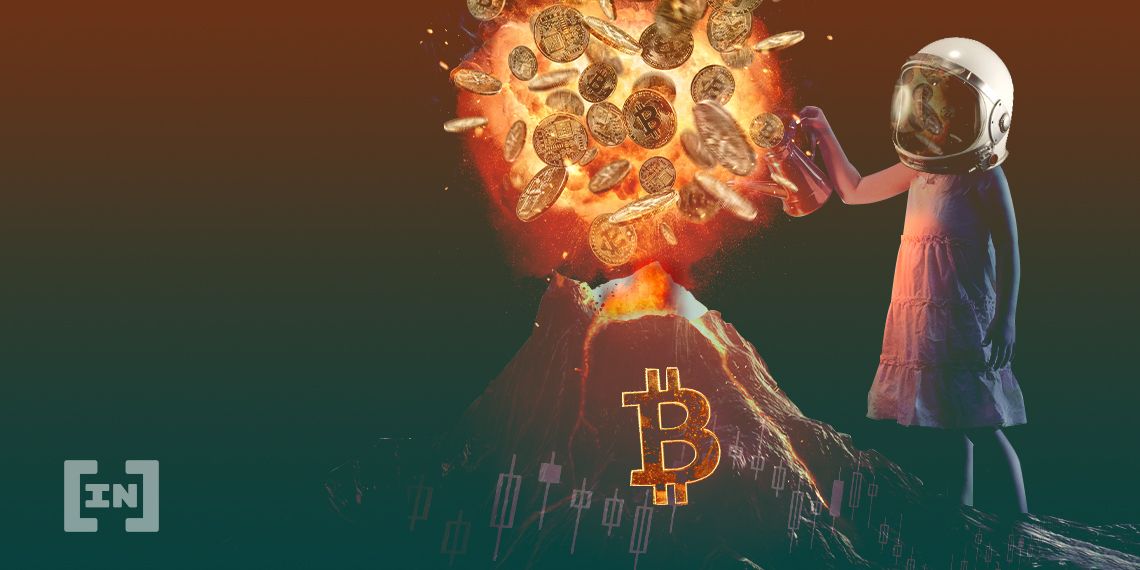
It is a period in which the price of an asset observes a sustained upward momentum. Typically, the rally will take place after a period where prices have been flat, trading in a narrow band, or experiencing a decline.
Ramen
For ramen noodles, the cheapest noodles in the supermarket. In the community it is the opposite of Lambo.
Range
It is the difference between the maximum price and the minimum price that occurs in the market within a certain period of time. Mainly, it is used as an indicator of volatility: if a market has a wide range, it means that it suffered volatility during the analyzed period.
Random walk theory or random walk
It is a financial model that assumes that the stock market moves in a completely unpredictable way. The hypothesis suggests that the future price of each stock is independent of its own historical movement and the price of other securities. Random walk theory assumes that both technical and fundamental forms of stock analysis are unreliable.
Rate of Return (RoR)
It is the loss or profit that an investment yields during a specific period of time, expressed as a percentage of the initial cost of the investment. A positive rate of return implies that the position has made a profit, while a negative rate of return implies a loss. You will earn a rate of return on any investment you make.
Raw material
A commodity is a physical asset that is often used as a raw material in the production of goods or services. In order to be listed on a market, the commodity, or raw material, must be interchangeable with another of the same type and quality.
Sponsored SponsoredThis means that, for an investor, gold is gold: it does not matter from which mine it was extracted or which company operated said mine. The term that designates this characteristic of raw materials is fungible.
Resistance level
It is the point on a price chart where the overwhelming inclination to sell an asset hampers the price’s upward trajectory. If the market price approaches the resistance level, investors can choose to close their positions and take profits, rather than risk the price falling.
The meaning of resistance level comes from market psychology and investor behavior as it indicates when an asset has reached a price level that market participants are reluctant to exceed (i.e., there is market resistance).
Risk management
It is the process of identifying potential risks in an investment portfolio and adopting the corresponding measures to reduce said risks. Risk in an investment is the possibility that an open position does not allow the desired results to be achieved: as a consequence, a reduced return may be obtained or losses greater than the money initially paid for the investment.
For this reason, investors often take steps to analyze the inherent risks of their trades and look for ways to reduce them.
REKT
The term derives from the word “shipwrecked.” In general, rekt is a jargon used to define something that was completely destroyed or a person who experienced a catastrophic failure. In the world of blockchain and cryptocurrencies, rekt is used to describe severe financial loss, caused by poor trading or investment.
Relong (go long again)
Repurchase a crypto asset.
Roger See
A renowned Bitcoin investor since the early years. He today is a Bitcoin Cash promoter, libertarian, and Bitcoin enthusiast as a way to achieve economic freedom.
Rollover
It is the process of keeping a position open beyond its expiration. The term is commonly used in Forex, where it is used to explain the potential interest that may be earned or incurred by holding a position overnight. However, rollover has different meanings in finance.
Revenue
It is the income obtained from an investment, in most cases in the form of interest payments or dividends. Yield is one of the ways an investment can make an investor money, and the other is the sale of the asset. In most cases, the yield is expressed as an annual percentage of the value of the original investment or its current market value.
S
Satoshi
It is the smallest unit a bitcoin can be divided into, as defined by the Bitcoin protocol. One Satoshi equals one-hundred-millionth of a BTC (0.00000001 BTC).
Satoshi Nakamoto
Satoshi Nakamoto is the elusive, pseudonymous creator of Bitcoin, the world’s first and largest cryptocurrency.
Scalping
In the field of investments, scalping is the action of opening and then closing a position in a very short time, with the aim of profiting from very small price movements. Investors who carry out this tactic are called scalpers, and they usually carry out many operations of this type every day.
The theory behind scalping is that small price movements are easier to predict than large ones.
Stablecoins

Stablecoins are digital assets designed to peg their market value to another asset, such as a fiat currency. For example, a dollar-pegged stablecoin such as USDT or USDC are always supposed to be priced at $1 regardless of market volatility.
SEC
It stands for the United States Securities and Exchange Commission. It is a body of the U.S. Administration that regulates the markets and protects investors in the United States, in addition to supervising mergers and absorptions.
Founded in 1934, the SEC is responsible for enforcing U.S. laws on the trading of securities (financial assets), maintaining markets that are transparent and efficient, ensuring that investors are not abused, and contributing to the proper functioning of the economy.
SegWit
It comes from Segregated Witness (separated witness). A technological improvement to make transactions more efficient.
Shilling
The action of self-interestedly promoting a cryptocurrency.
Shitcoin
It refers to all those useless cryptocurrencies that exist in the market. Cryptocurrencies that were created without a defined purpose, offered at speculative prices, or simply without any use cases.
Slippage
It is the term that defines the situation in which the price at which your order is executed does not match the price at which it was requested. This is when the market moves against your trade and, in the time it takes for your broker to process the order, the original price is no longer available.
SNB
It stands for Swiss National Bank, the central bank of Switzerland. Like other central banks, the SNB is in charge of defining the monetary policy in the country. It is also responsible for issuing Swiss franc paper money.
Unlike many other central banks, however, the SNB is a private company. Some public bodies own just over 50% of their shares and the rest are listed on the Swiss Stock Exchange.
SOR
The Smart Order Routing technology or SOR (Smart Order Router) is an automated online trading process that follows a series of rules to obtain liquidity when trading. The goal of SOR technology is to find the best way to execute a trade and thus take advantage of the opportunities offered by trading centers through advanced algorithms.
SOR technology became necessary as electronic trading became popular and even a legal requirement to ensure that all banks and brokers were clear about how their products work.
Spread
In finance, a spread is the difference in price between the stated buy (offer) and sell (bid) prices for an asset. The spread is a fundamental part of CFD trading, as it is the way in which the price of these derivatives is established.
Many brokers, market makers, and other providers will charge their prices as a spread. The buy price of a spread asset will always be higher than the underlying market, while the sell price will always be slightly lower than the underlying market.
Stock market
It is a centralized place where shares of publicly traded companies are bought and sold. Stock markets differ from other markets in that tradable assets are limited to stocks, bonds, and Exchange Traded Products (ETPs).
Stock index
It is a group of stocks that are used as an indicator of a sector, financial market, or economy. As a general rule, a stock index consists of a set of the main stocks of a specific market.
Stock trading
It is a service that offers private and institutional investors the opportunity to buy and sell shares. Stock trading has evolved over the past few decades, from physical paper documentation and telephone settlements to online trading.
But the process of buying and selling shares is generally the same: it requires access to the books of a stock exchange.
Stop-loss
Stop-loss is an instruction to close a trade when the price dips to a particular level that is less favorable than the current price. This means buying if the market reaches a specified higher price, or selling if it reaches a specified lower price.
When the suffix “loss” is added, it refers to closing a losing position, in this case being a risk management tool. A stop can be executed with slippage depending on the liquidity conditions of the market.
Stop orders
They are a type of order with which you can tell your broker to execute a trade when a certain level less favorable than the current market price is reached. They are the opposite of limit orders, which allow a broker to be told to buy or sell an asset at a certain price that is more favorable than the current market price.
Straddle
In trading, it is a type of options strategy that allows investors to speculate on whether a market is about to become volatile without having to predict a specific price movement. It involves simultaneously buying or selling call and put options with strike prices and expiration dates.
Support level
As a general rule, markets do not allow the asset price to fall below its support level. In theory, there are investors willing to buy and as a consequence, the asset price will rise again. This is the opposite concept of the resistance level, which is the point at which the market seems reluctant to allow the asset price to rise further.
If an asset falls below its support level, that level is either suppressed — and a new support level will have to be identified — or eventually confirmed, in the event that a large number of investors step in and buy the asset.
T
Technical Analysis (TA)
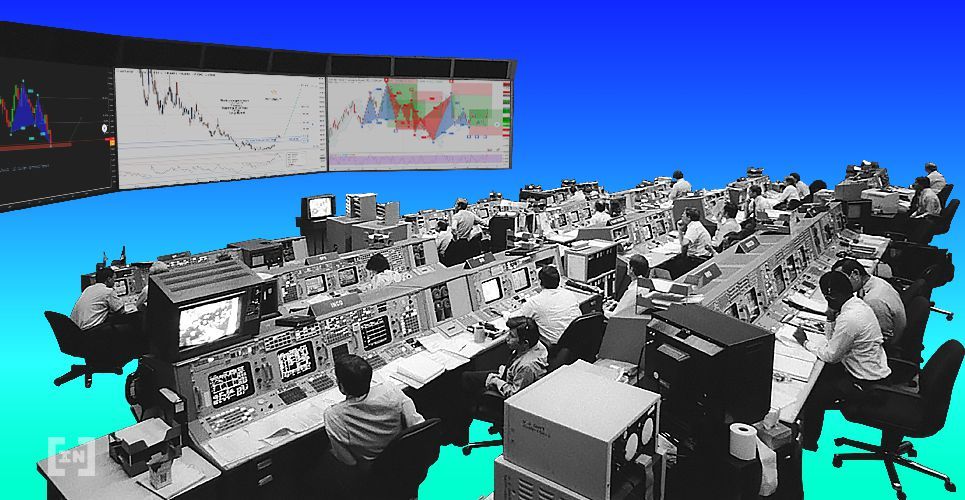
Technical analysis is a system that allows you to examine and predict price movements in financial markets based on historical data and market statistics. It is based on the idea that if a trader can identify previous patterns, then he will be able to predict future price movements fairly accurately.
Tom-next
It is the abbreviation for “Tomorrow-Next day,” which is itself a short-term Forex transaction that allows investors to simultaneously buy and sell a currency on two different business days: tomorrow and the next day.
The purpose of tom-next is to prevent investors from having to take physical delivery of currencies and to keep their Forex positions open overnight. As with commodities, Forex trades normally end with the investor receiving the asset he has traded. In Forex, the expected delivery day is two days after any trade (known as the spot trade date), but you can use tom-next to extend the trade beyond this date.
Trading
Trading is basically speculating in the financial markets with the aim of generating returns over time. Unlike an “investment,” trading is more short-term; weeks, days, hours, and even minutes. You can trade in different assets, such as currencies, commodities, stocks, or futures, among others.
Trading plan
It is a strategy conceived by an individual investor to systematize asset evaluation, risk management, investment types, and goal setting. Most trading plans have two parts: the long-term goals and the roadmap to achieve them.
Treasure letters
They are short-term public debt securities issued by the Public Treasury for the financing of the State. The maturity of these assets is less than eighteen months and their profitability is established as a discount.
The Spanish Public Debt market holds auctions for the issuance of Treasury bills on a monthly basis, with a minimum amount for each request of 1,000 euros, and multiples of the same amount for requests for higher amounts.
Trend reversal
It is a change of direction in the price movements of an asset: it occurs when an upward trend (or a rally) turns into a downward trend (a correction) or vice versa.
The opposite of a trend reversal is a continuation, which is when the price of the asset maintains the trend. This often involves a move beyond support or resistance levels.
v
Valuation (Market valuation)
It is the term used to describe how much an asset or a company is worth in the financial market, according to market participants. It is commonly used to refer to a company’s market capitalization, which is calculated by multiplying the number of shares outstanding by the current market price.
Value at Risk (VaR)
Value at Risk is a measure used to assess the financial risk of a company, investment portfolio, or open position over a period of time. VaR estimates the potential for loss and the probability that it will occur.
Vinny Lingham
He is a renowned South African entrepreneur who is the co-founder and CEO of Civic, a platform that encrypts identity-related information on the blockchain.
Vitalik Buterin
He is a Russian programmer and writer, primarily known for being the co-founder and leader of Ethereum and the co-founder of Bitcoin Magazine.
VWAP
It is short for “Volume Weighted Average Price,” which is a technical analysis tool that shows the relationship between the price of an asset and its total trading volume. It provides traders and investors with a measure of the average price at which a security is trading over a given period of time.
The VWAP is commonly used as a benchmark by investors who want to be more passive in the market (usually with pension funds and mutual funds) and investors who want to be sure whether a security has been bought or sold at a good price.
W
Warranty covered
It is a financial contract that grants the holder the right, but not the obligation, to acquire or sell an underlying asset for a certain price (exercise price) in a future period or date (expiration).
Covered warrants are issued by large financial institutions, but are traded on the stock market. Besides being able to trade in both rising and falling markets, this type of contract can exist on a variety of underlying securities, including stocks, currencies, indices, and commodities, as well as interest rates and baskets of shares.
Weekend trading or trading on the weekend
It is a service that allows you to trade in several markets during the weekend. If something happens during the weekend that could affect your position in any of the markets that are offered, weekend trading can be used to limit losses or protect profits.
In indices, weekday trades and weekend trades are independent but can be used to offset each other.
Wallet
An application in which Bitcoin or any other altcoin is stored. It allows you to receive and send digital money to another user anywhere in the world. It works through cryptographic keys.
Whale
The term ‘whale’ refers to anyone holding large amounts of Bitcoin (or other cryptocurrencies). Whales usually have a big influence over the market.
WTI
West Texas Intermediate (WTI) crude or U.S. crude is a blend of various light and local U.S. crude oils. It is mined and processed in the United States, and is refined primarily in the Middle East and along the Gulf of Mexico coast. WTI oil is used as the main benchmark in the U.S. oil market.
X
X86 Virtual Machine
It is a virtual machine created by Qtum for facilitating the execution of smart contracts in different programming languages. In other words, X86 allows Qtum developers to write smart contracts in any programming language of their choice.
Y
Yearn Finance
Yearn Finance is a suite of DeFi products that investors can use to optimize their earnings through lending and trading.
Yield Curve
The Yield Curve is a graphical representation of the way the yields on a debt instrument such as bonds vary as a function of the time remaining to its maturity.
Yield farming
Yield farming refers to the practice of investing cryptocurrencies in decentralized finance to earn interest.
YTD
Acronym for ‘year-to-date’.
Z
Zero-confirmation transaction
It is an alternative way of referring to an unconfirmed transaction.
Zero-knowledge proof
In cryptography, zero-knowledge proofs are a way of authenticating and validating transactions without revealing anything about the transactions themselves. It provides privacy to both the sender and the recipient involved while also maintaining the legitimacy of the transaction.
ZK-Snarks
It stands for “Zero-knowledge Succinct Non-Interactive Argument of Knowledge.” Simply put, it enables you to prove that you own certain information without actually revealing the information.

